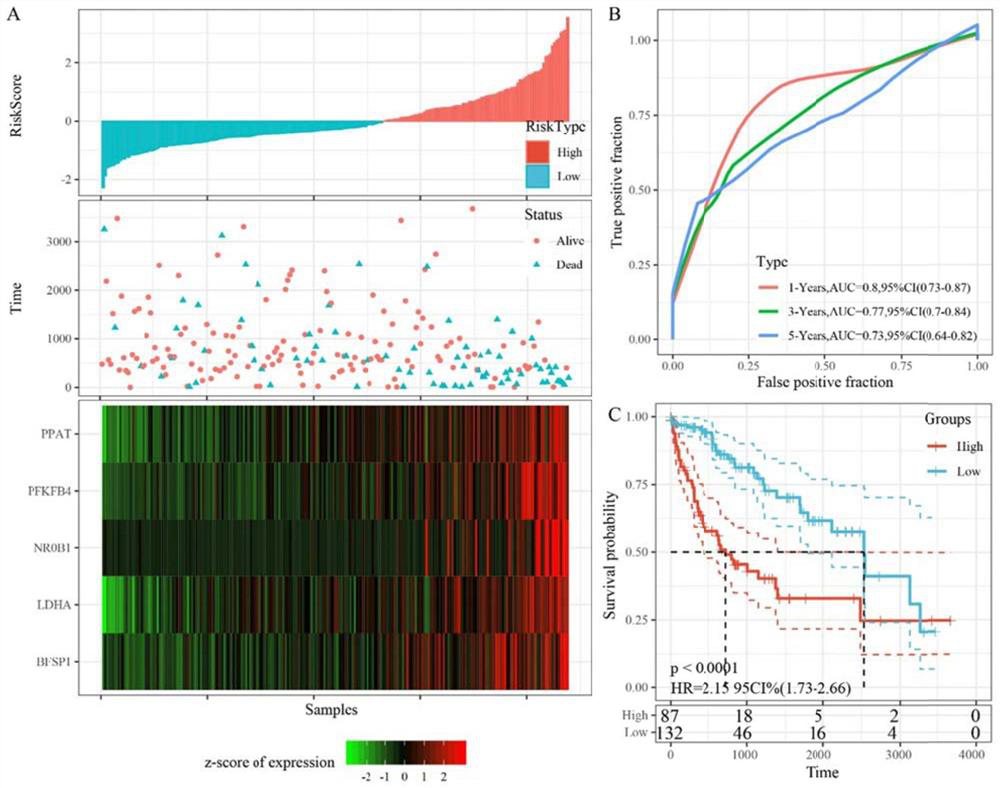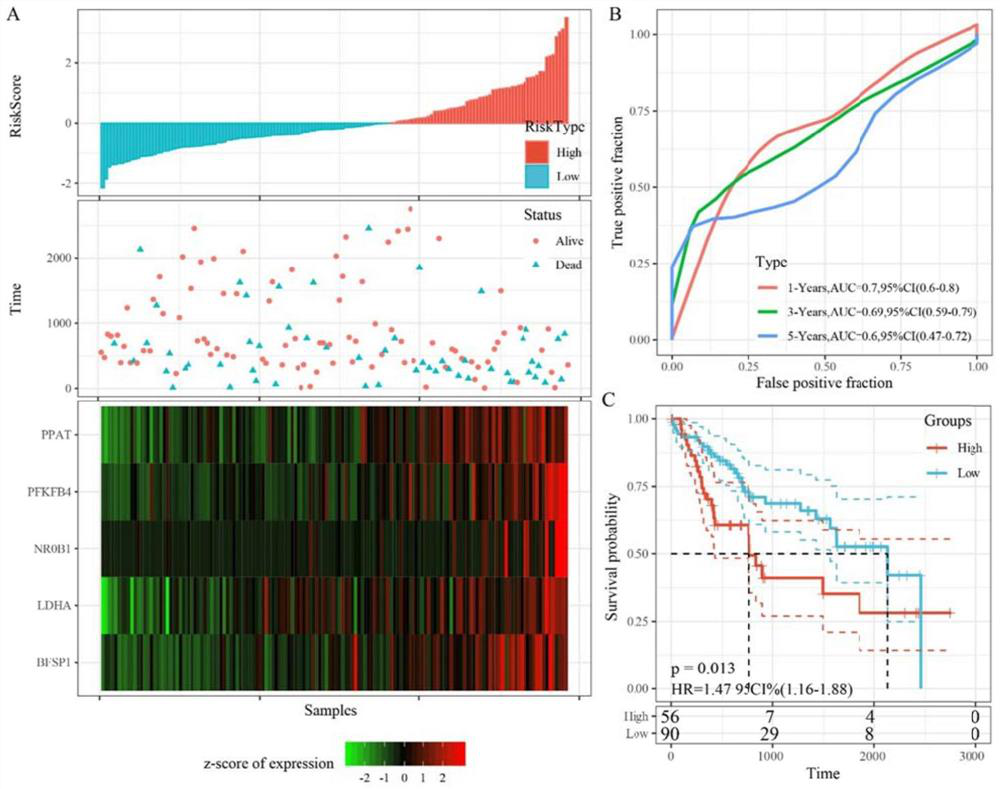Model for predicting curative effect of hepatocellular carcinoma immunotherapy and construction method thereof
A technology for immunotherapy and hepatocellular carcinoma, applied in the field of clinical medicine
- Summary
- Abstract
- Description
- Claims
- Application Information
AI Technical Summary
Problems solved by technology
Method used
Image
Examples
Embodiment 2
[0047] Tissue Microarray (TMA) Structural Five-Gene Model Evaluation
[0048] To evaluate the prognostic power of the 5-gene model, we performed immunohistochemistry (IHC) using a tissue microarray (Shanghai Xinchao Biotechnology Co., Ltd.) of cancer tissues from 90 HCC patients and measured integrated densitometric analysis. The primary antibodies used are listed in Table 1. IHC scores were independently assessed by three senior pathologists without knowledge of patient characteristics. IHC score calculation: including IHC score=[0.307×protein LDHA expression level]+[0.268×proteinPPAT expression level+[0.455×protein BFSP1 expression level]+[0.234×protein NROB1 expression level]+[0.109×protein PFKFB4 expression level] . Kaplan-Meier log-rank analysis was used to evaluate the difference in survival between the high and low IHC score groups.
[0049] Table 1. Antibody Information Sheet
[0050]
[0051] The protein expression levels of five genes LDHA, PPAT, BFSP1, NR0B1 ...
PUM
 Login to View More
Login to View More Abstract
Description
Claims
Application Information
 Login to View More
Login to View More - R&D
- Intellectual Property
- Life Sciences
- Materials
- Tech Scout
- Unparalleled Data Quality
- Higher Quality Content
- 60% Fewer Hallucinations
Browse by: Latest US Patents, China's latest patents, Technical Efficacy Thesaurus, Application Domain, Technology Topic, Popular Technical Reports.
© 2025 PatSnap. All rights reserved.Legal|Privacy policy|Modern Slavery Act Transparency Statement|Sitemap|About US| Contact US: help@patsnap.com



